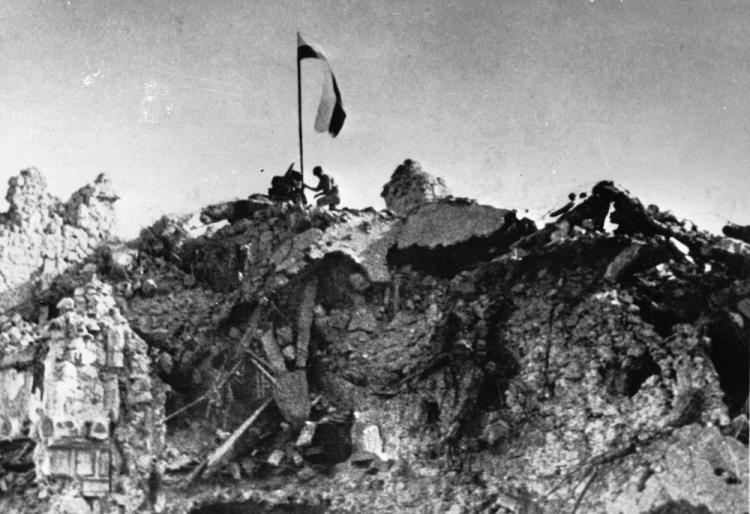How did the legend of Monte Cassino come to be, and what has it meant for Poles over the past 80 years? In Polish history, the battle of Monte Cassino has written itself as a distinct symbol of national sentiment. Composed amidst the heat of battle, the song “Czerwone maki” (Red Poppies) came to be treated nearly as a second national anthem and as a mournful hymn for a generation grieving lost hopes for a free country.
From the outset, those fighting sensed they were part of a momentous event. Lieutenant Władysław Balon, a 27-year-old officer in the 4th Armored Regiment “Skorpion” and a member of General Władysław Anders’ 2nd Polish Corps, described the hoisting of the Polish flag at the top of the ruins of the Monte Cassino monastery as the sun breaking through the war-torn landscape on May 18, 1944, casting light on their prolonged effort. This poignant scene symbolized not just a battle, but a fight for Poland itself.
Balon, who had embarked on a long and arduous journey from being a law student defending Lviv in 1939 to fighting across Europe, vividly recounts the events of May 18, 1944. Before arriving at Monte Cassino, Polish forces had already fought their way through the Gothic Line and would continue north to Bologna. Despite suffering three wounds, Balon, like many others, found a permanent home in the U.K. post-war, unable to return to a Communist-dominated Poland.
The battle of Monte Cassino started in January 1944 with attempts by American, British, New Zealand, Indian, French, and Canadian forces to breach the German defenses known as the Gustav Line, a strategic barrier cutting across Italy, anchored by the ancient Benedictine monastery founded in the 6th century by Saint Benedict. The Allies’ controversial decision to bomb the monastery has remained a point of historical debate, considered by some as a tactical error given its cultural and historical significance.
General Anders was called upon in late March to engage his forces, then in reserve. He had to make a swift decision — within 10 minutes. His acceptance was driven by the belief that a Polish victory would counter Soviet propaganda suggesting Poles were reluctant to fight the Germans and would enhance Polish prestige.
Although the battle brought military glory to the Polish forces, it did not alter the geopolitical outcome for Poland, which was largely sealed at the Tehran and Yalta conferences where Roosevelt, Churchill, and Stalin had agreed on shifting Poland’s borders westward and allowing Stalin free rein over Eastern Europe post-war.
The participation of Polish forces in breaking through the Gustav Line, though militarily significant and proof of their allegiance to the Allied cause, did not affect these pre-decided political outcomes. General Kazimierz Sosnkowski later criticized Anders for engaging in what he saw as an unnecessary spilling of Polish blood — about 1,000 Polish soldiers died, and nearly 3,000 were wounded.
Most of Anders’ soldiers, hailing from the eastern regions of pre-war Poland annexed by the Soviet Union in 1939, found themselves stateless at the war’s end. Many settled in Western countries, weaving their individual legacies into the fabric of their new communities.
Among them was Ludwik Jaszczur and his unusual wartime companion, a bear named Wojtek, who had helped carry munitions during the Italian campaign and later lived out his days in an Edinburgh zoo where he died in 1963 and is now commemorated with a statue.
Jaszczur passed away in February 2023 at the age of 95, leaving behind a story of camaraderie and survival that stretched far beyond the battlefield.
Neither the bear nor the soldier returned home.






